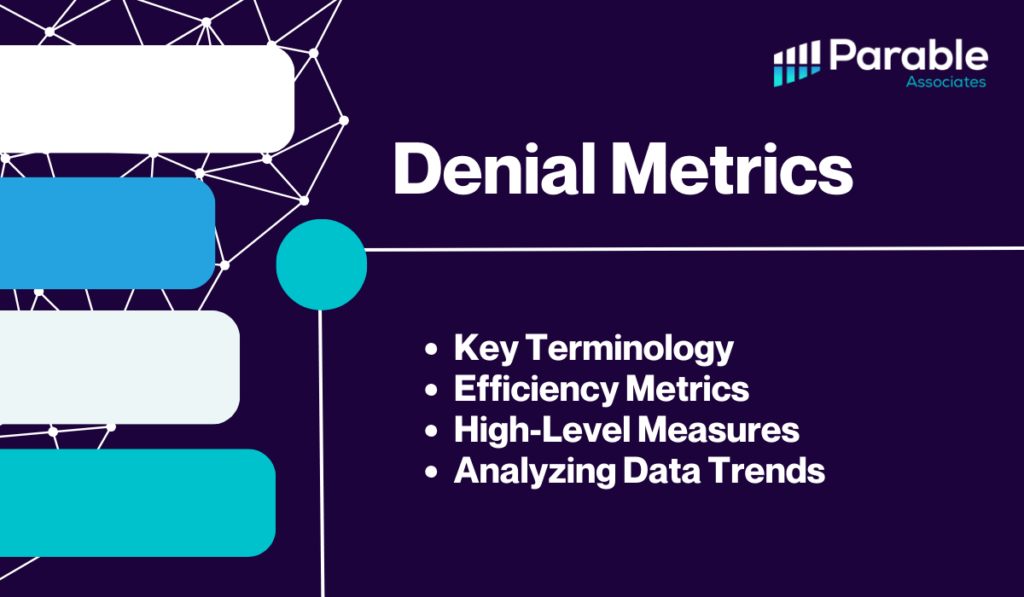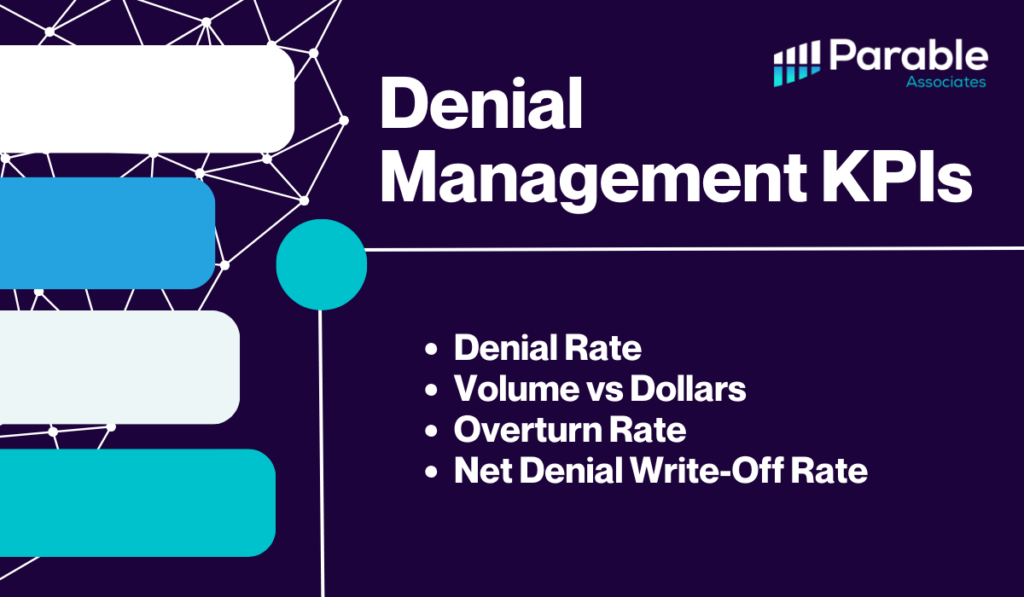In the healthcare industry, effective claim denial management plays a significant role in a practice’s financial health. Denials – when an insurance payer refuses payment for services rendered – are more common than one might think. They not only disrupt cash flow but also signal potential issues in billing or clinical documentation. Effective denial management in healthcare minimizes the impact denials can have on a practice’s bottom line. Understanding the different types of denials and their causes is the first step to improving your practice’s processes and financial health.
Reasons for Denials
Denials occur for various reasons. Some are clinical, meaning the service wasn’t deemed medically necessary or didn’t align with clinical guidelines. Others are technical, stemming from errors in the claim submission process like incorrect information or lack of pre-authorization. These technical denials are often identified by automated systems checking for specific errors.
Additionally, denials are not just a singular event. They can be initial (the first denial), subsequent (the denial of a resubmitted claim), or final (when all attempts to overturn a denial have been exhausted). They can occur at the claim level or specific to a charge or service line within a claim.
The lifecycle of a denial starts with the receipt of an electronic remittance advice (ERA) or 835 (EOB – explanation of benefits) with the denial. The ERA is an electronic transaction that provides claim payment information and detailed reasons for denials, categorized into groups like contractual obligations or payer-initiated reductions. The denial is evaluated based on reason codes and routed to the appropriate resource for resolution. This triage process is crucial in the revenue cycle. Clinical denials might go to a nurse reviewer, while billing specialists might address technical ones.
The Importance of Denial Management in Healthcare
Denial management in healthcare encompasses identifying the root causes of denied claims, whether clinical, technical, or coding-related, and implementing corrective actions. This process involves resolving individual denials and understanding and addressing underlying patterns and trends to prevent future issues. Effective denial management can substantially enhance a practice’s financial health and patient satisfaction by combining identification, workflow optimization, and prevention strategies. This ultimately reduces the need for patient payments when insurance successfully covers costs.

Understanding Denial Metrics
Denial metrics and terminology play a crucial role in evaluating the efficiency and effectiveness of a practice’s denial management processes. These metrics include the denial rate and the ratio of denied claims to the total number of claims submitted. This rate can be calculated in various ways – by volume (the number of denials) or dollar amount (the value of denials).
The initial denial rate is another critical metric, focusing only on claims rejected or denied on the first submission. This rate helps identify issues in the initial claims process, allowing for targeted improvements.
Key Terminology
When examining denials, distinguishing between claim-level and line-level denials is essential. Claim-level denials refer to rejecting an entire claim, whereas line-level denials focus on specific items or services within a claim.
Additionally, understanding the reason behind each denial is vital. This is where denial reason codes, such as CARCs (Claim Adjustment Reason Codes) and RARCs (Remittance Advice Remark Codes), come into play. These codes provide detailed denial explanations and are crucial for effective management.
Efficiency Metrics
Efficiency metrics in denial management involve measuring the volume of denials and the speed of their resolution. These include metrics like time from initial denial to appeal and time from initial denial to claim resolution. Understanding the timeline of these processes is critical for improving the efficiency of denial management.
High-Level Measures
Organizations should focus on high-level measures like the total impacted charges, adjusted dollar amount, and the expected payment versus actual payment. These measures help quantify the financial impact of denials and guide strategic decisions in the denial management process.
Analyzing Denial Trends
Analyzing denial trends involves looking at various factors, including which payers deny more frequently, the types of denials common to specific departments or providers, and the staff responsible for following up on open denials. This analysis helps in pinpointing areas for process improvement and reducing future denials.
Understanding and effectively utilizing denial metrics and terminology is crucial in healthcare denial management. These metrics and terms help identify and resolve current denials and play a significant role in preventing future denials. This improves the overall financial health of healthcare practices.
Effective Denial Management Strategies
A comprehensive denial management strategy involves multiple components.
Denial Management Steering Committee
Organizations should establish a committee comprising various departmental representatives. This committee’s role is to review denial data, understand root causes, and develop collective strategies for mitigation.
Transparency in Analytics and Processes
Maintaining transparency in denial analytics and ensuring clear communication across departments is essential. Regular reporting and discussions about denial reasons and rates help to identify potential process breakdowns and areas for improvement.
Job Shadowing and Empathy
Understanding different departmental functions through job shadowing can provide valuable insights into the denial process. This practice fosters empathy and a big-picture mindset, which is crucial for identifying and addressing process inefficiencies.

Key Performance Indicators in Denial Management
Denial management involves monitoring various key performance indicators (KPIs). Each of these metrics plays a vital role in understanding and improving the denial management process, ultimately leading to better financial health for healthcare providers.
Denial Rate
Explanation
The denial rate is a critical metric in healthcare revenue cycle management that indicates the percentage of claims rejected by insurance companies. This metric is pivotal for understanding how effectively a healthcare provider manages its billing and coding processes.
Importance of Differentiation
It’s crucial to differentiate between initial denials and total denials. Initial denials refer to claims refused on the first submission, offering insights into the immediate effectiveness of the billing process. On the other hand, total denials include subsequent denials after initial rejections, painting a broader picture of the ongoing challenges in the claims process. Understanding which type of denial rate is being evaluated is critical to targeting specific areas for improvement.
Volume vs. Dollars
Volume Perspective
The volume rate focuses on the sheer number of denials, regardless of their financial value. This metric is significant in assessing the workload and efficiency of the billing staff, as a high volume of denials requires more resources for rework and follow-up.
Dollars Perspective
The dollar rate measures the total financial value of denied claims. This perspective is crucial for evaluating the financial impact of denials on the healthcare provider’s revenue. High-value denials might require prioritized attention, even if they occur less frequently, due to their larger impact on cash flow.
Overturn Rate
Definition and Importance
The overturn rate measures how successfully a healthcare provider can reverse denials upon appeal. It’s calculated as the percentage of initially denied claims later approved after resubmission or appeal.
Indicator of Efficiency
A high overturn rate signifies an efficient and effective denial management process, where the healthcare provider can effectively contest and overturn wrongful denials. It also reflects the provider’s understanding of payer requirements and their ability to comply with these requirements upon resubmission.
Net Denial Write-Off Rate
Financial Impact Assessment
This rate reflects the true financial impact of denials on a healthcare provider’s bottom line. It is calculated by considering the total amount written off as uncollectible after all attempts at appeal and resubmission have been exhausted.
Indicator of Loss
The net denial write-off rate is essential for understanding the actual revenue loss due to denials. It helps healthcare providers gauge the effectiveness of their denial management strategies and highlights areas where improvements are needed to minimize financial losses.
Denial management in healthcare requires a multifaceted approach involving transparency, cross-functional collaboration, and continuous process improvement. While denials will likely remain a challenge in healthcare revenue management, understanding their nature and effectively employing strategies can significantly mitigate their impact. Healthcare providers can safeguard revenue and ensure smoother operational workflows by focusing on prevention and efficient management. Let’s look at the practice of recognizing denial management as an issue and the steps taken to address it.
Revolutionizing Denial Management at Superlative Derm
Background
Superlative Dermatology (Superlative DERM) experienced issues in denial management, charge lag, patient collections, and accounts receivable (AR). They approached these challenges by conducting a dimensional analysis of various data types, including transactions, AR, and denials. This case study explores the process and strategies implemented to improve their revenue cycle management (RCM).
Analysis and Findings
Transactional Data
Superlative DERM’s revenue from evaluation and management (E/M) visits and office procedures remained consistent year-over-year. A significant portion of their charges in 2022 came from commercial managed care payers, Medicare, managed Medicare, and Blue Cross Blue Shield. However, inconsistencies in charge lag were noted, particularly during summer months and with specific providers. While their point-of-service collection was decent at 5%, there was potential to improve, considering only 22% of upfront collections were realized.
Accounts Receivable
The average days in AR were commendable at 36 days, but there was scope to reduce it to 30 days for enhanced collections. A notable 37% of the total AR was over 90 days, indicating substantial room for improvement, especially with commercial managed care and Blue Cross Blue Shield payers.
Denials
Although not alarming, the denial rate showed room for improvement, with the volume denial rate being almost double the dollar denial rate. High avoidable denials were identified in areas like non-covered services, authorization issues, and eligibility.
Strategic Recommendations
Patient Access
Improvements in patient access were critical. Superlative DERM is needed to collect accurate insurance information and perform eligibility checks consistently. Addressing these gaps would reduce billing errors and AR workload and improve upfront patient collections for non-covered items.
Billing
The team identified a need to eliminate duplicate bills and ensure accurate billing orders for different payers. A system to identify potential duplicates early in the process was recommended.
Accounts Receivable and Denial Follow-up
Focusing on older denials, especially with significant payers, was advised. Implementing prioritization rules for working on denials and creating reports for tracking productivity and resolution times were suggested.
Charge Capture
Charge capture processes were analyzed to understand monthly variations. Implementing reporting and monitoring tools for charge recording times was recommended.
Patient Collections
Reviewing patient collection practices, especially post-insurance adjudication, and denials, was suggested. This involved analyzing workflow rules and triggers and reporting for more effective billing and collections.
Conclusion
Superlative DERM’s comprehensive approach to analyzing its RCM processes led to targeted recommendations across patient access, billing, AR, and patient collections. By addressing the identified gaps, particularly in patient access and billing, Superlative DERM reduced denial rates, improved cash flow, and streamlined its overall revenue cycle management processes. The case of Superlative DERM exemplifies how data-driven analysis can significantly improve denial management in healthcare and improve RCM and operational efficiency.

Healthcare Analytics Professionals
Parable Associates specializes in business Intelligence (BI) exclusively within the healthcare sector. We have over a decade of improving healthcare provider profitability through analytics and technology optimization.
Our team combines their expertise in healthcare with advanced analytical skills, utilizing state-of-the-art technology such as Power BI and Tableau to address complex healthcare challenges, identify opportunities for operational improvements, optimize your revenue cycle, and support the success of your healthcare practice. Our extensive experience in healthcare BI solutions and technology includes working with some of the top names in the industry – Experity, ModMed, and WebPT. We offer comprehensive services, including BI consulting, custom dashboard development, ongoing support, and educational opportunities through the Parable Academy.
Contact us today to discuss how our tailored solutions can impact your organization. Parable Associates is the perfect business intelligence, implementation consulting, and training partner. Contact us and book a discovery call today!
Denial Management FAQs
A claim denial occurs when an insurance payer refuses to pay for services rendered by a healthcare provider. It can disrupt cash flow and indicate billing or clinical documentation issues.
Denials can be clinical, where a service isn’t deemed medically necessary or doesn’t align with guidelines. It can also be technical, stemming from errors like incorrect information in the claim submission process.
Initial denials are the first refusal of a claim, subsequent denials occur for resubmitted claims, and final denials happen when all attempts to overturn a denial are exhausted. These can occur at both the claim and line levels within a claim.
An ERA is an electronic transaction that provides detailed reasons for denials, categorized into groups like contractual obligations or payer-initiated reductions. It’s essential for evaluating and triaging denials in the revenue cycle.
Effective denial management identifies the root causes of denied claims and implements corrective actions. It’s crucial for enhancing a practice’s financial health and patient satisfaction, reducing unnecessary patient payments.
Denial metrics include the denial rate (ratio of denied claims to total submitted), initial denial rate (focused on first submission rejections), and efficiency metrics like time from initial denial to appeal.
These codes provide detailed explanations for each denial, helping healthcare providers understand and address the reasons behind claim rejections.
Strategies include forming a denial management steering committee, maintaining transparency in denial analytics, encouraging job shadowing for empathy and understanding, and regularly monitoring key performance indicators.
By analyzing trends like frequent denial types and responsible payers, healthcare practices can pinpoint areas for process improvement and reduce future denials.

